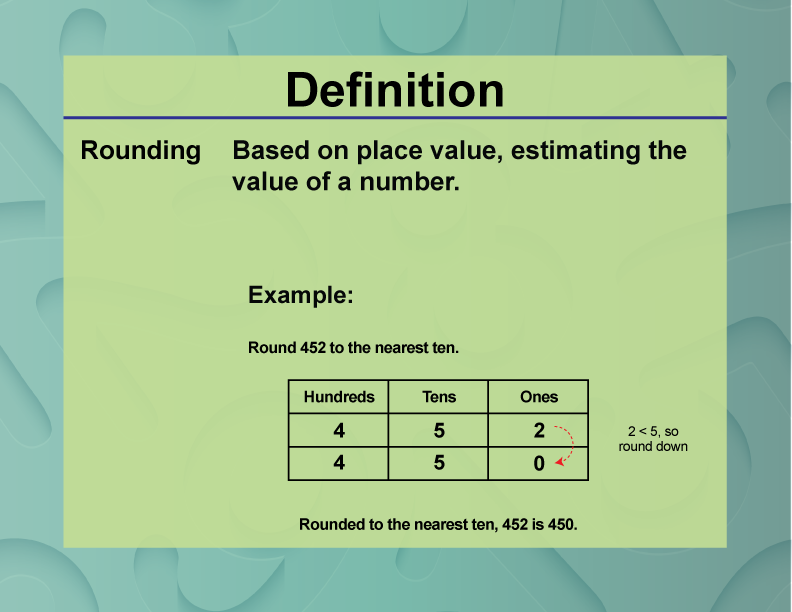
Display Title
Definition--Place Value Concepts--Rounding
Display Title
Rounding

Topic
Place Value
Definition
Rounding is the process of adjusting a number to a nearby specified place value to simplify calculations or reports.
Description
Rounding is a mathematical technique used to approximate numbers to a specified place value, making them easier to work with in calculations or reports. This process involves adjusting the digits of a number based on specific rules, such as rounding up or down depending on the value of the digit to the right. For example, rounding 456 to the nearest ten results in 460.
In real-world applications, rounding is used in financial transactions, data analysis, and scientific measurements to simplify numbers and improve readability. It is essential for making estimates and ensuring consistency in reports.
In algebra, rounding is important for simplifying expressions and solving equations. It helps in estimating solutions and understanding the impact of approximation.
Teaching rounding is relevant to math education because it helps students develop numerical fluency and estimation skills. It also prepares them for real-world applications where exact values are not always necessary.
Teacher's Script: "Let's round 347 to the nearest ten. Look at the digit in the units place: 7 is greater than 5, so round up to 350."
For a complete collection of terms related to Place Value click on this link: Place Value Collection
| Common Core Standards | CCSS.MATH.CONTENT.1.NBT.B.2, CCSS.MATH.CONTENT.1.NBT.C.4, CCSS.MATH.CONTENT.2.NBT.A.1, CCSS.MATH.CONTENT.3.NBT.A.1, CCSS.MATH.CONTENT.4.NBT.A.1, CCSS.MATH.CONTENT.5.NBT.A.4 |
|---|---|
| Grade Range | 1 - 4 |
| Curriculum Nodes |
Arithmetic • Numbers and Patterns • Place Value |
| Copyright Year | 2021 |
| Keywords | place value |